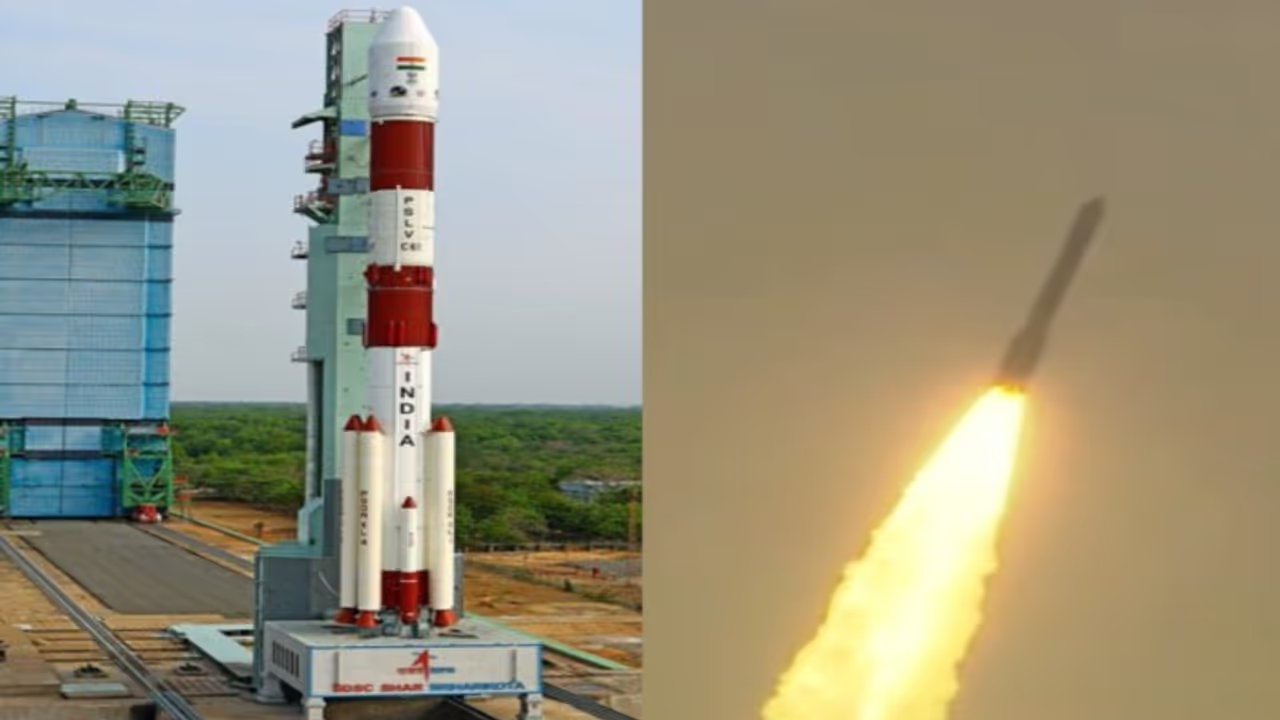India’s PSLV-C61 mission faced a setback as its third stage failed to ignite properly, preventing orbit insertion. Despite the failure, ISRO remains resilient, investigating the issue and preparing stronger for future launches.
Sriharikota, May 18, 2025 — The PSLV-C61 mission, launched at 9:32 AM IST from Sriharikota, was set to carry the EOS-09 satellite into space. With the nation watching, the rocket’s first two stages roared to life, but the third stage hit a snag, losing power and failing to reach orbit.

Though the mission didn’t succeed, ISRO’s determination shines brighter than ever, proving India’s space journey is unstoppable.

What Makes PSLV Special?
The Polar Satellite Launch Vehicle (PSLV) is like India’s trusted family scooter—reliable, hardworking, and loved by all. With over 60 successful missions, it’s carried satellites for India and the world. The rocket has four stages, each like a runner in a relay race, passing the satellite closer to its goal.
The third stage, powered by solid fuel called HTPB, is like the heart of the rocket. It burns to create a powerful push, lifting the satellite into space. But during PSLV-C61, this stage lost steam, and the mission couldn’t cross the finish line.
What Happened Up There?
ISRO is still investigating, but here’s what might have gone wrong:
1. Fuel Trouble: The HTPB fuel might not have burned evenly, like a damp sparkler fizzling out.
2. Leaky Case: A small crack in the rocket’s body could’ve let power escape, like air hissing from a balloon.
3. Nozzle Issue: The nozzle directs the burning gases. If it was damaged, the thrust weakened—like a hose with a kink.
4. Heat or Cold Shock: Extreme temperatures in space can stress the rocket, like a glass cracking in hot water.
5. Testing Oversight: A tiny flaw might have slipped through checks, like a loose screw in a new bike.
Why This Isn’t the End
The EOS-09 satellite was meant to help farmers, city planners, and our security teams with sharp images from space. Its loss stings, but ISRO’s heart beats strong. Failures are like monsoon rains—tough but they help things grow. India’s space scientists are already digging into the problem, ready to make the next launch a triumph.
PSLV’s Proud Journey
PSLV has been a star for over 30 years, with only three stumbles:
- 1993 (PSLV-D1): Early hiccups with stage separation.
- 2017 (PSLV-C39): A heat shield didn’t open.
- 2025 (PSLV-C61): Third stage trouble.
Each time, ISRO learned, improved, and soared higher. From Chandrayaan to Mangalyaan, India’s space story is one of grit and glory.
What’s ISRO Doing Now?
Our scientists are on the case, working like detectives:
- Checking flight data for clues.
- Studying the HTPB fuel and rocket parts.
- Reviewing every test to catch any missed details.
ISRO’s next launch will be stronger, like a wrestler training harder after a fall.
What’s HTPB Fuel?
HTPB (Hydroxyl-Terminated Polybutadiene) is a solid fuel that’s tough and burns steadily, like a long-lasting campfire. Mixed with other chemicals, it powers the third stage with a mighty 240 kN thrust, pushing satellites into orbit.
A Bright Future Awaits
PSLV-C61’s stumble is just a small bump on India’s space highway. ISRO’s dreams are as big as the sky, and its scientists are as tough as a buffalo in the fields. Every challenge makes them sharper, every failure fuels their fire. Like a kite soaring after a gust, India’s space journey will climb higher, carrying our pride to the stars.
(Girish Linganna is an award-winning science writer and Defence, Aerospace & Geopolitical Analyst based in Bengaluru. He is also Director of ADD Engineering Components India Pvt. Ltd., a subsidiary of ADD Engineering GmbH, Germany. Contact: girishlinganna@gmail.com )


